Artillery in Canada (1) British Columbia: Vancouver, HMCS Discovery, 15th Field Artillery Regiment, RCA
Artillery preserved in British Columbia
The aim of this website is to locate, identify and document every historical piece of artillery preserved in Canada. Many contributors have assisted in the hunt for these guns to provide and update the data found on these web pages. Photos are by the author unless otherwise credited. Any errors found here are by the author, and any additions, corrections or amendments to this list of Guns and Artillery in Canada would be most welcome and may be e-mailed to the author at [email protected].
For all official data concerning the Royal Regiment of Canadian Artillery, please click on the link to their website:
Royal Regiment of Canadian Artillery Website
Note: Back in the day, artillery in Canada was referred to by its radio call sign "Sheldrake". It is now referred to by its "Golf" call sign. (Acorn sends)
Vancouver

(City of Vancouver Archives Photo, AM1545-S3-: CVA 586-1187)
Bronze 12-pounder 6-cwt Smoothbore Muzzleloading Gun with Dolphin carrying handles, "the 9 o'clock gun".

(City of Vancouver Archives Photo, AM1545-S3-: CVA 586-1188)
Loading the Bronze 12-pounder 6-cwt Smoothbore Muzzleloading Gun with Dolphin carrying handles, "the 9 o'clock gun".

(Thesocialistesq Photo)





(Author Photos)
Bronze 12-pounder 6-cwt Smoothbore Muzzleloading Gun with Dolphin carrying handles, weight 13-3-13 (1,553 lbs), H & C King, 1816, DCLVII, King George III cypher (1760-1820), and Henry Phipps, 1st Earl of Mulgrave, Master General of the Ordnance cypher. This gun is mounted on a wood Naval gun carriage, and currently rests behind a wire cage in Stanley Park. It is one of the guns given by the British Government to the "provinces of Canada" in 1856. Originally located at Nanimo, the gun was moved to Esquimalt during the Pig War with the US. In 1894 it was moved to Vancouver’s Stanley Park, where it is fired every night at 9 PM, hence its nick-name, "the 9 o'clock gun".

King George III by Sir William Beechey, ca 1799. (Wikipedia Photo)


Royal cypher of King George III on the barrel of a bronze gun.

(City of Vancouver Archives Photo, AM54-S4-2-: CVA 371-2620)
A pair of 4-inch (10.2-cm) naval guns mounted in Stanley Park, Vancouver, Aug 1914.

(City of Vancouver Archives Photo, AM54-S4-: St Pk P228.1)
Royal Canadian Naval Volunteer Reserve with a pair of 4-inch (10.2-cm) naval guns emplaced near Ferguson Point in Stanley Park, Vancouver, Aug 1914. These guns were possibly dismounted from HMCS Shearwater.


(ChapterhouseInc Photos)
Cast Iron possibly 6-pounder Smoothbore Muzzleloading Gun, replica, mounted on a wood Naval Gun carriage. Located just outside the War of 1812 Museum at Canada Place.

(City of Vancouver Archives Photo, AM54-S4-: Mil P312)
Cast Iron 64-pounder 64-cwt Muzzleloading Rifle, weight unknown, maker and Serial No. unknown, mounted on an iron garrison carriage, outside the Beatty Street Drill Hall, 620 Beatty St, with a sentry from The Duke of Connaught's Own Rifles, in 1911. There were six of these MLRs at Victoria in 1906.









(Author Photos. 25 Jan 2019))
Cast Iron 64-pounder 64-cwt Muzzleloading Rifle, weight 71-0-0 (7,952 lbs), RGF Serial No. 418, 1870, on left trunnion, blank on the right trunnion, bronze British Columbia Garrison Artillery logo and Canadian coat of arms cover on the muzzle. This gun is mounted on an iron garrison carriage, No. 1 of 2, in front of the Beatty Street Drill Hall, 620 Beatty St.
These guns were reportedly provided to the 2nd Battalion, 5th (BC) Regiment, Canadian Garrison Artillery, two companies of which were in Vancouver in the late 1890s. This battalion was later converted to a rifle battalion, but the now obsolete guns remained at their armoury. The 64-pounder 71-cwt guns were converted to rifled muzzle loaders by a process developed by Major Palliser of the Royal Artillery, by which a wrought iron rifled tube was inserted into a bored out 8-inch 65-cwt smooth bore gun. This system allowed some of the old smooth bore guns to be retained in service, but because they were based on a cast iron barrel they were not as strong as the new 64-pounder 64-cwt guns which were built up from a series of wrought iron tubes. They could not fire as heavy a charge and consequently were of little use against armoured vessels. Guns of this type were installed at Finlayson Point and Nias (Victoria ) Point Batteries at Victoria from 1878 to ca.1897. These guns may well have served in these batteries before being sent to Vancouver. (Dale Mumford)

(Leon Jensen Photo)









(Author Photos, 25 Jan 2019)
Cast Iron 64-pounder 64-cwt Muzzleloading Rifle, weight 71-0-0 (7,952 lbs), RGF Serial No. 525, on left trunnion, blank on the right trunnion, bronze British Columbia Garrison Artillery logo and Canadian coat of arms cover on the muzzle. This gun is mounted on an iron garrison carriage, No. 2 of 2, in front of the Beatty Street Drill Hall, 620 Beatty St.
Vancouver, 15th Field Artillery Regiment, RCA
The 15th Field Artillery Regiment is a Primary Reserve Royal Canadian Artillery (RCA) regiment based in Vancouver at the Bessborough Armoury. 15th Field Regiment is part of the 39 Canadian Brigade Group of Land Force Western Area. The regiment was created in 1920 as one of the recommendations of the Otter Committee. In the Second World War it manned the coastal defence artillery guns that protected the Port of Vancouver. After the war the regiment reverted to field artillery.

(Maxwell J. Toms Photo)

(Author Photo)

(Clive Prothero-Brooks Photos)

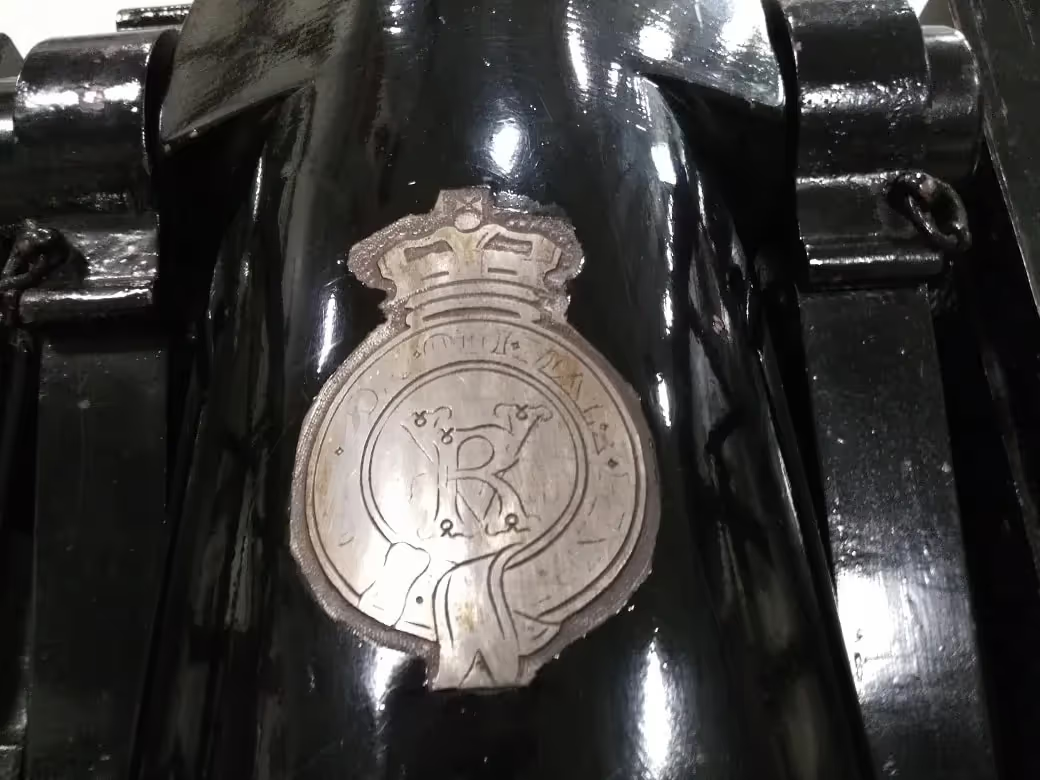



(Leon Jenson Photos)
9-pounder 6-cwt Land Service (L.S.) Muzzleloading Rifle, weight 5-3-27 (671 lbs), (RGF No. 450, Mk. II, 1876) on left trunnion, Firth Steel No. 4539 on the muzzle, Queen Victoria cypher, broad arrow mark, mounted on an iron carriage with wood wheels. This gun was a new design in 1874 for the Royal Horse Artillery. It was longer than the 8-cwt gun but had the same carriage. It is on a five year loan to the 15th Field Artillery Regiment Museum & Archives in Vancouver from the RCA Museum, Shilo, Manitoba.

18-pounder QF Mk. I Field Gun being examined by the Earl of Athlone, Governor General of Canada, during his visit to the 4th Fd Regt, RCA, Petawawa, Ontario, 1940. (Library and Archives Canada Photo, MIKAN No. 3563835)

18-pounder QF Mk. II Field Guns upgraded with pneumatic tires, being fired by Canadian Reserve Artillery Gunners. (Library and Archives Canada Photo, MIKAN No. 4232664).

(Leon Jensen Photo)


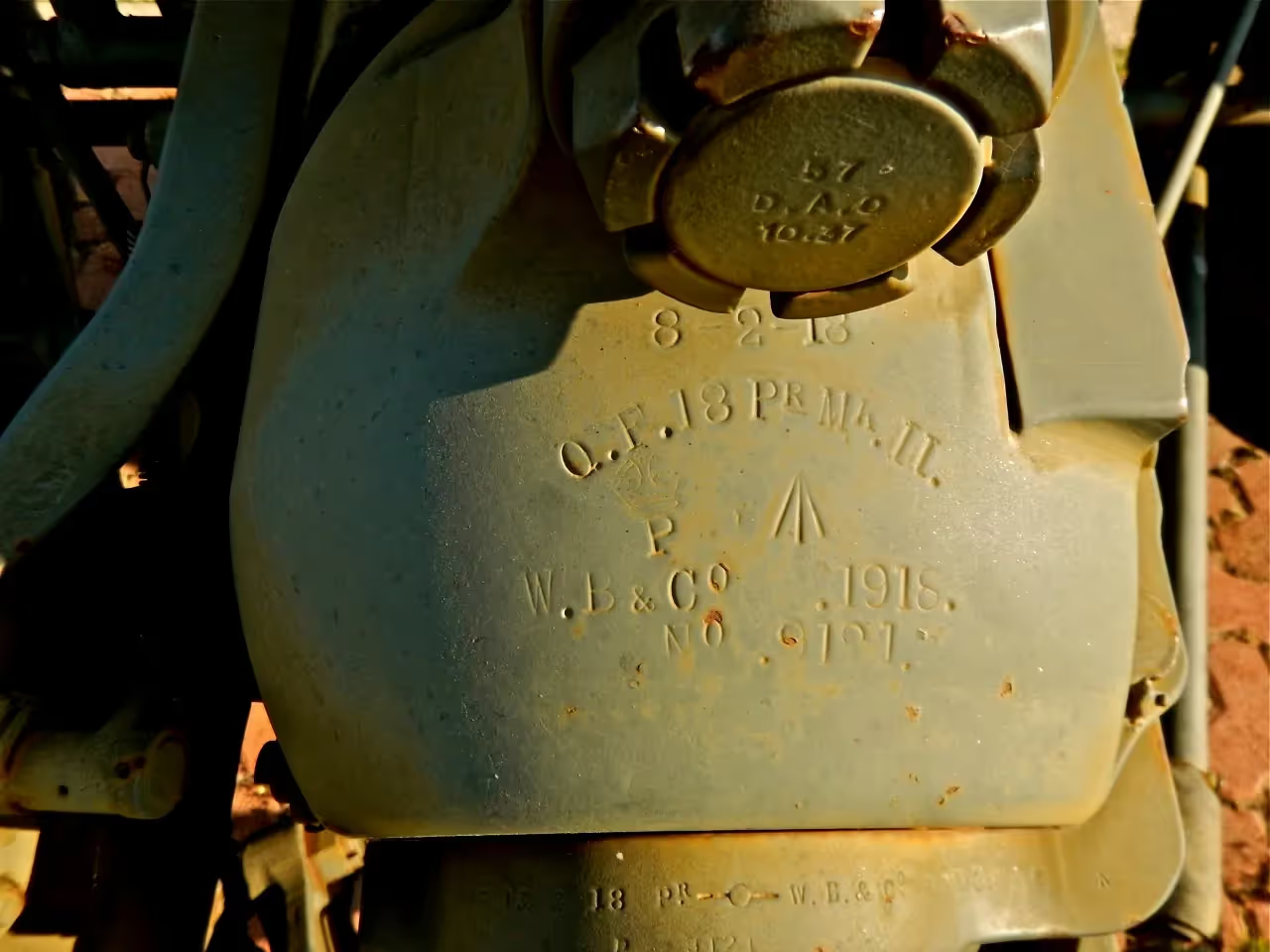


(WO Chris Damjanoff Photos)


(John Moloughey Photos)
18-pounder QF Mk. II Field Guns upgraded with pneumatic tires, Reg. No. 9121, WBC 18 II, mounted on carriage C871, RMC Arty Dept Kingston, 1933. 9121 was sent to Martin Perry as the prototype platform for the pneumatic tires - the gun was removed before shipping the carriage to the US. It is now mounted on carriage C6544. It was set up for display in Wainwright, Alberta in August 1981 by No. 1 Troop, 9 Para Squadron (UK) during Exercise Pond Jump West III. It is being restored by the 15th Field Artillery Regiment RCA in Vancouver.

(John Eckersley Photo)

(John Eckersley Photo)
Cast Iron 9-pounder Smoothbore Muzzleloading Gun, weight, maker and Serial No. unknown, 15 above a Queen Anne cypher, No. 1 of 2, mounted on a concrete stand in front of the East entrance to the Bessborough Armoury. The Queen Anne gun would date between 1702 and 1714. This gun was one of two found buried at the Woolwich Arsenal in London. They were brought to Canada in the 1980s, as a favour via a Royal Fleet Auxiliary vessel, cleaned at Chilliwack, and mounted outside the armoury.

(Author Photo)
Queen Anne cypher on a Cast Iron 18-pounder SBML Gun, weight 32-2-23 (3,663 lbs), in the Canadian War Museum, Ottawa, Ontario.

(Wikipedia Photo)
Anne, Queen of Great Britain (6 February 1665 – 1 August 1714). She became Queen of England, Scotland and Ireland on 8 March 1702. On 1 May 1707, under the Acts of Union, two of her realms, the kingdoms of England and Scotland, united as a single sovereign state known as Great Britain. She continued to reign as Queen of Great Britain and Ireland until her death.



(John Eckersley Photos)
Cast Iron 24-pounder Smoothbore Muzzleloading Gun, weight, maker and Serial No. unknown, 25, No. 2 of 2, mounted on a concrete stand in front of the West entrance to the Bessborough Armoury. This gun was one of two originally buried at the Woolwich Arsenal in London. It may date from the 18th century, but without markings, its provenance is unknown. The two guns were brought to Canada in the 1980s, as a favour via a Royal Fleet Auxiliary vessel, cleaned at Chilliwack, and mounted outside the armoury.

(Library and Archives Canada, MIKAN No. 3607521)
25-pounder C Mk. 2 QF Field Gun with No. 9 circular firing platform, towed by a Canadian Military Pattern (CMP) Field Artillery Tractor (FAT).

25-pounder C Mk. 2 QF Field Gun with No. 9 circular firing platform, being served by Gunners of 17th Fd Regt, RCA, in action at Castel Frentano, Italy, 10 Feb 1944. (Library and Archives Canada Photo, MIKAN No. 3534477)


25-pounder C Mk. 2 QF Field Gun with No. 9 circular firing platform, RCA, ca 1950s. (DND Photos)



(John Eckersley Photos)

(John Moloughy Photo)
25-pounder C Mk. 2 QF Field Gun with No. 9 circular firing platform, Carriage Reg. No. CA 15944.



(John Eckersley Photos)
25-pounder C Mk. 2 QF Field Gun with No. 9 circular firing platform, Carriage Reg. No. CA 10642 with Limber CA-29149. Inventory of the Regiment, can be fired.



(John Eckersley Photos)
25-pounder C Mk. 2 QF Field Gun with No. 9 circular firing platform, with funeral platform, Carriage Reg. No. CA 10636, with Limber CA-29258. Inventory of the Regiment.

(City of Vancouver Archives, Photo, AM1545-S3-: CVA 586-2120)
25-pounder C Mk. 2 QF Field Gun with No. 9 circular firing platform, towed by a Canadian Military Pattern (CMP) Field Artillery Tractor (FAT) in a Victory Loan parade on Burrard Street, Vancouver, 1942.

(John Ekersley Photo)
Canadian Military Pattern Field Artillery Tractor.


(John Eckersley Photos)
40-mm Bofors Light Anti-Aircraft Gun, Breech Casing No. 7880.

(City of Vancouver Archives Photo, CVA 371-1102)
French Canon de 75-mm modèle 1897, being towed by a truck from the 148th Field Artillery Regiment Battery East Vancouver, at 1062 West Georgia Street in 1938.

6-pounder 7-cwt QF Anti-Tank Gun with the 3rd Anti-tank Regiment RCA during training exercise, 1944. (Library and Archives Canada Photo, MIKAN No. 4542723)



(John Eckersley Photos)
6-pounder 7-cwt QF Anti-Tank Gun stamped 6 PDR B/R No. L/17978 Montreal T G-1966. Previously on display at the Royal Canadian Legion Branch No. 30, Kerrisdale, 2177 W 42nd Street. This gun is currently in storage and after being restored will be on display at the Bessborough Armoury.
Vancouver, Seaforth Highlanders of Canada Museum & Archives

(City of Vancouver Archives Photo, AM1535-: CVA 99-1155.2)
Vancouver Volunteer Regiment Artillery hauling a 9-pounder RML gun through a forest, c1917.
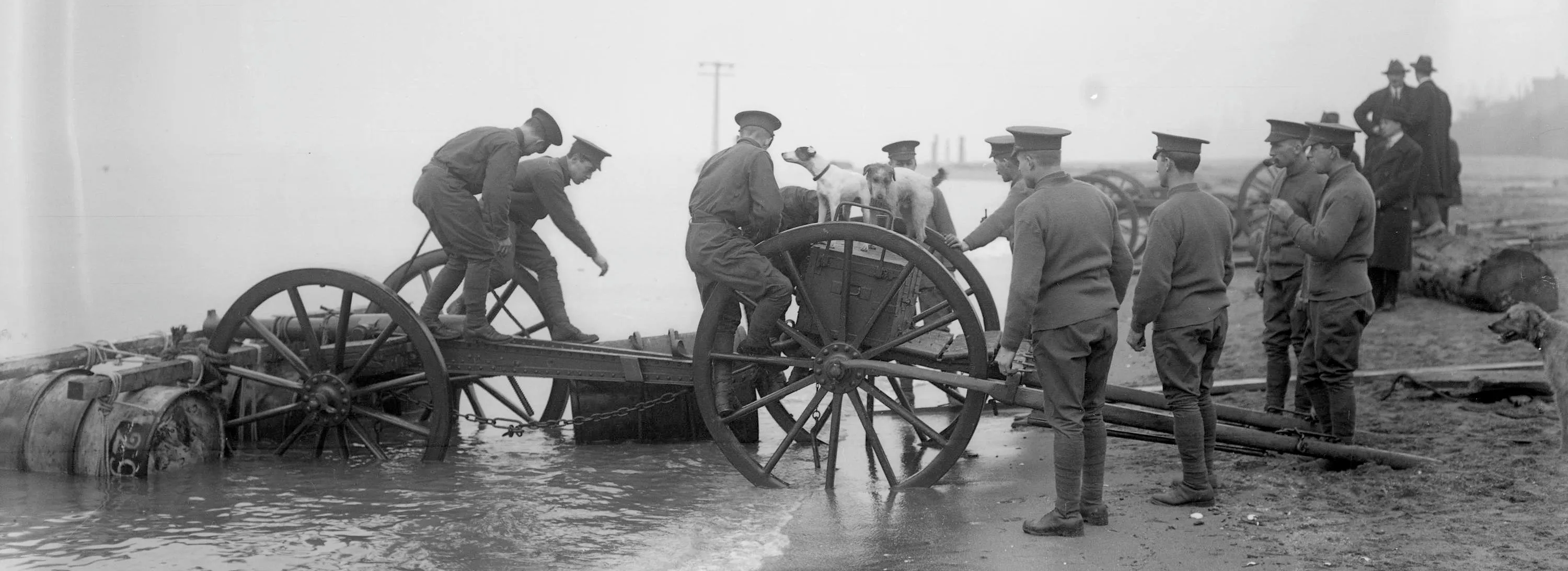
(City of Vancouver Archives Photo, AM1535-: CVA 99-1155.3)
Vancouver Volunteer Regiment Artillery hauling a 9-pounder RML gun at a beach, c1917.
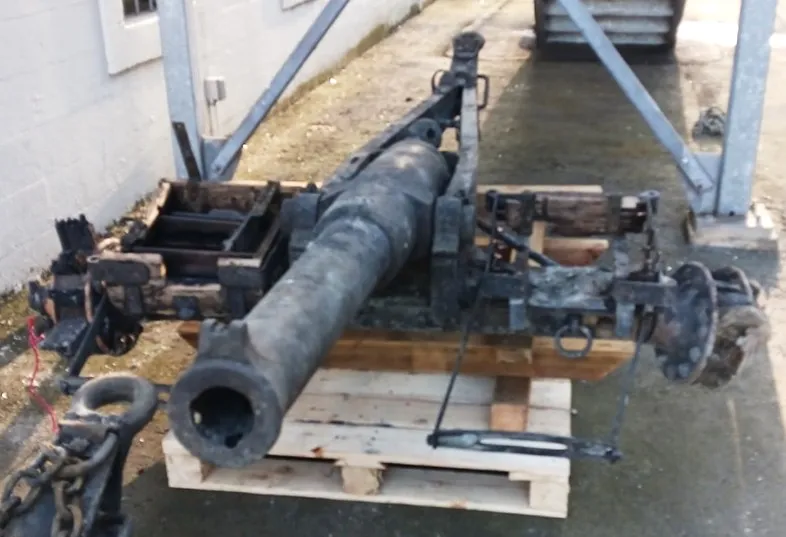

(James Calhoun Photos)
9-pounder 6-cwt Land Service (L.S.) Muzzleloading Rifle, weight 5-3-27 (670 lbs), (RGF No. 134, II,1874) on the left trunnion, blank on the right trunnion, Vickers Steel, 1874, on the muzzle, broad arrow with Queen Victoria cypher on the barrel. Found buried on the grounds of the PNE in 2025.
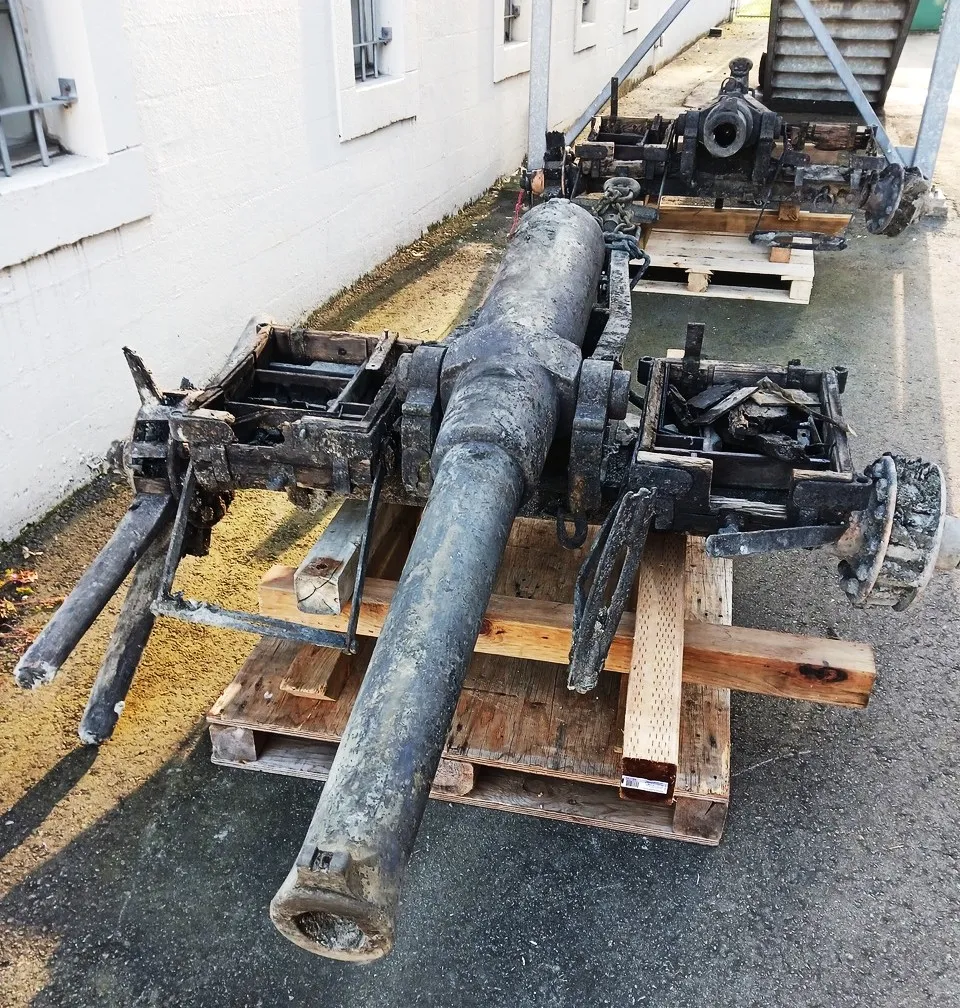
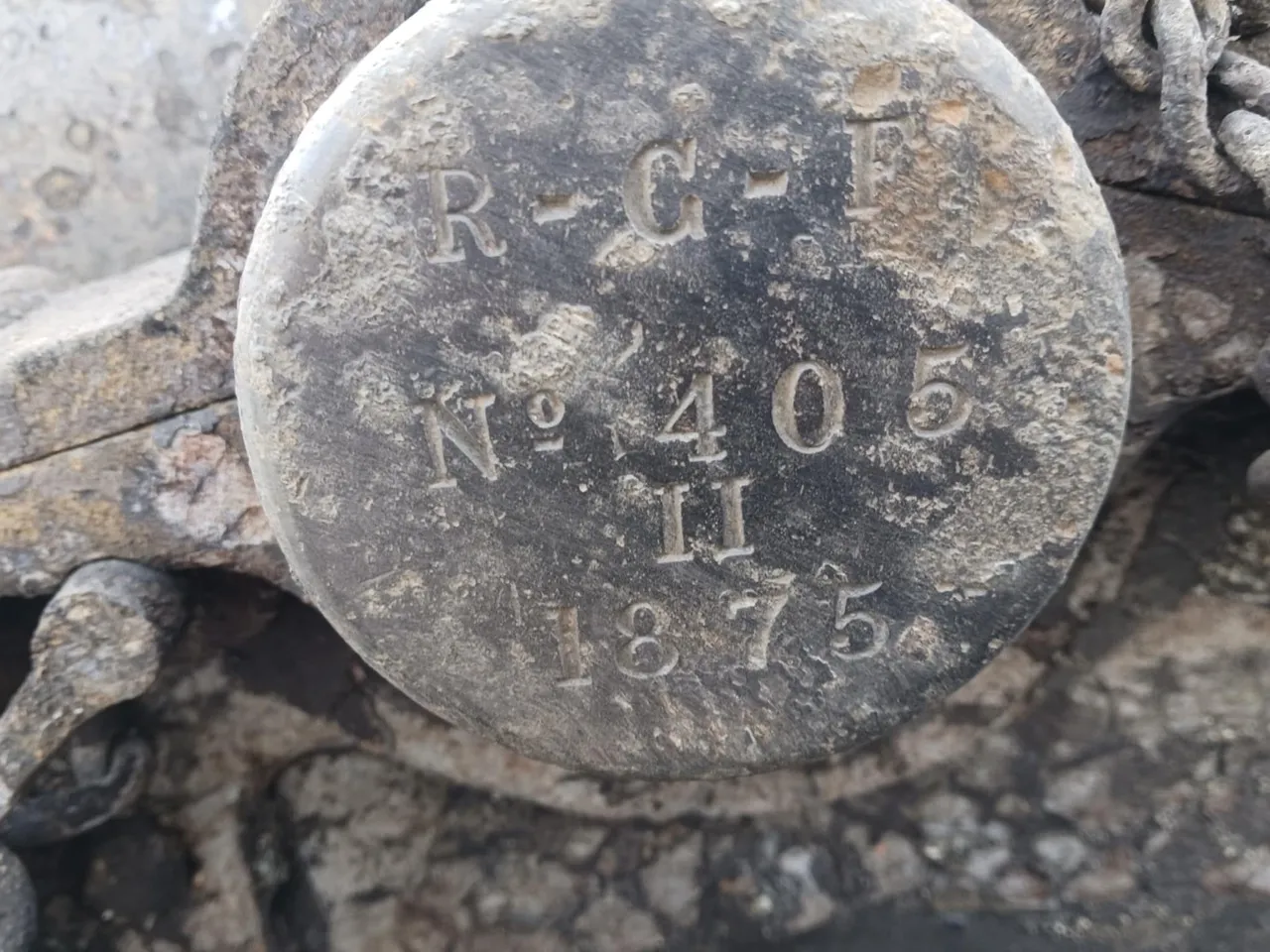
(James Calhoun Photos)
9-pounder 6-cwt LandService (L.S.) Muzzleloading Rifle, weight 5-3-27 (670 lbs), (RGF No. 405, II,1875) on the left trunnion, blank on the right trunnion, possibly Vickers or Firths Steel on the muzzle, broad arrow and Queen Victoria cypher on the barrel. Found buried on the grounds of the PNE in 2025.
In theory, the 6-cwt version was for the horse artillery, but Canada officially used only the 8-cwt for everything. The Mk. II entered British service in September 1874. Officially we purchased 80 9-pounder 8-cwt guns, and there were two more in British stores when we took over Halifax in 1905. That report does not mention any 9-pounders taken over at Esquimalt. Because of the physical existence of three 6-cwt guns in Canada based on work by Hal Skaarup, Max Toms, and others, I have always assumed that the two guns from Halifax were 6-cwt guns. Note that the HMCS Rainbow class cruisers originally had a 9-pounder RML for landing parties, but Rainbow apparently came with a 12-pounder. Also, presumably, they would have been the sea service version. There is a 1923 report on the disposal of British guns found “lying around in the dockyard on takeover in 1910”. No 9-pounders are on the list, but it suggests that the handover might not have been up to infamous British Quartermaster standards. The 9-pounders were essentially obsolete by that time and may have been ignored. Based on these First World War photos, these guns were used by the reserves for training during the war. Just about anything was pressed into service. [Based on the photos] I would say that they are not of the type used by the RCA in the late 1800s, and were probably taken over from the British when we took over the defence of Esquimalt in 1905. (Doug Knight)
We found a 105mm German gun from the First World War at the end of March at the PNE/Hastings Park. All of Vancouver's captured guns that were on display in parks throughout the city were moved to Hastings Park by 1933. Eventually, at least 5 of 15/16 that were there were cut up for scrap. The rest were likely pushed into the ravine that used to be there. We got a call last week and lo and behold, they found more guns, two 9-pounders and a bunch of MG08/15s, not 20 feet from the first one. We think we might find everything from German 77-mm guns to a 21-cm Mörser 1916 . (James Calhoun, Curator, Seaforth Highlanders of Canada Museum & Archives)
Vancouver, Old Hastings Mill Store Museum
Three guns are located just inside the museum, located at 1575 Alma Street. Lieutenant Governor Eric Hamber contributed these guns to Hastings Mill collection of memorabilia. The guns came with the mill’s first shipment of supplies from England, ca 1865. The rough-sawed cedar plank pioneer store was initially erected on the south shore of Burrard Inlet for British Captain Edward Stamp’s British Columbia and Vancouver Island Spar, Lumber and Sawmill Company, established in 1865. On 28 July 1930, the old Hastings Mill store and post office was hoisted aboard a large scow, and towed some ten kilometers from Burrard Inlet, through the Lions Gate and across English Bay to its present location.

(John Eckersley Photo)
Cast Iron 4-pounder Smoothbore Muzzleloading Carronade with Blomefield pattern breeching ring, stamped FALKIRK PROVD. 4PR, weight unknown, trunnion data unknown, mounted on a small wood naval gun carriage. No. 1 of 3.


(John Eckersley Photos)
Cast Iron 4-pounder Smoothbore Muzzleloading Carronade with Blomefield pattern breeching ring, stamped FALKIRK PROVD. 4PR, weight unknown, trunnion data unknown, mounted on a small wood naval gun carriage. No. 2 of 3.


(John Eckersley Photos)
Bronze 4-pounder Smoothbore Muzzleloading Gun, weight unknown, (No. 18) on the left trunnion. The length from muzzle to the tip of the knob is 37 inches and the diameter of the bore at the muzzle is 3.25 inches (this measurement is consistent with a 4-pounder). The gun is mounted on a small wood naval gun carriage. with a stone holding the button down. No. 3 of 3.
Vancouver, HMCS Discovery
1-pounder QF Mk. I (Maxim) Gun, V.S.M. (Vickers, Sons and Maxim LL) 1902 Automatic Gun, (Serial No. N1103), mounted on a stand stamped (Serial No. 10875). This gun aka "pom-pom", is inside the main entrance to HMCS Discovery.


6-pounder 8-cwt QF Mk. I Hotchkiss Gun, No. 1 of 2, (Serial No. TBC), Montreal, 1941-42, mounted on Vickers, Sons & Maxim LL 8-pound 1901 stand. These guns were used on board HMCS Bonaventure. Alberni Street. (Photos courtesy of PO2 Gordon J. McGee)
6-pounder 8-cwt QF Mk. I Hotchkiss Gun, No. 2 of 2, (Serial No. TBC), Montreal, 1941-42, mounted on Vickers, Sons & Maxim LL 8-pound 1901 stand. Alberni Street.
Vancouver

(City of Vancouver Archives Photo)

(City of Vancouver Archives Photo)

(City of Vancouver Archives Photo)
German First World War 21-cm Mörser 1916 neuer Art (21-cm Mrs 16 n.A.) Heavy Mortar, (Serial Nr. 1136), captured by 72nd Bn on 27 Sep or 2 Nov 1918. This gun was sent to Vancouver ca 1919, and carried a dedication plaque that read, "This twenty-one centimeter German howitzer is one of the two such guns captured by the 72nd Battalion, Seaforth Highlanders of Canada during the operations in France of November 1st to November 4th, 1918. These operations resulted in the passage of the Canal de l'Escaut and the taking of the City of Valenciennes and several smaller towns. The forward movement initiated by this attack never slackened for one moment until Mons was captured and the Armistice declared on November 11th, 1918." It is believed that the gun was scrapped ca 1939/1942 to aid the war effort.
There aren't very many of these 21-cm 21-cm Mörsers left in the world. Of the three that survive in Canada, there is one 1916 model in the Quebec Citadel, another 1910 model in Battlefield Park, Quebec City, and a 1910 model in the Canadian War Museum in Ottawa, Ontario.
In the UK, there are three 1910 models, with one each at Bovington, Duxford, and Inniskilling. Australia has two 1910 models with one each at Childers and Melbourne, and three 1916 models, with one each at the Australian War Museum Canberra, another at Hobart and the third (with a blown barrel) in the Australian War Museum at Mitchell. Another 1916 model is with the Peter Jackson collection at Omaka, New Zealand.
In the USA, there are four 1910 models with one each at Bloomington, Illinois, Clackamas, Oregon, Hickory, North Carolina, and Lowell, Montana). There are ten 1916 versions, with one each at Waterbury, Connecticut (Serial Nr. 1233), Kennedy Park, Fall River, Massachusetts (Serial Nr. 839), Fort Meade, Maryland, Fort Sill, Oklahoma, Columbus, Kansas, Harrisonburg, Virginia, (Serial Nr. 913) Newport News, Virginia Wars Museu, Virginia (Serial Nr. -82), Victoria, Virginia (Serial Nr. 883), Corporal Willis S.Cole Military Museum, Kirtland, Washington, and Spring Green, Wisconsin (locked in full recoil position, damaged).
One is located at Spandau, Germany, one 1916 model is with the Musée Royal de l'Armée (presented with the tube in transport position on a Rohr Wagon) in Brussels, Belgium, and one 1916 version is with the Finnish Artillery Museum at Hameenlinna, Finland.
Vancouver Exhibition Association

Library and Archives Canada Photo, MIKAN No. 3397947)
German First World War 15-cm schwere Feldhaubitze 1902 (15-cm sFH 02), captured by Canadians, Arras, France, Sep 1918. (

(CTV still via Colin Stevens)
German First World War 10.5 cm leichte Feldhaubitze 16 (10.5 cm leFH 16), (Serial Nr. 7283) captured by Canadians, found buried on the grounds of the
Pacific National Exhibition site in Vancouver.





